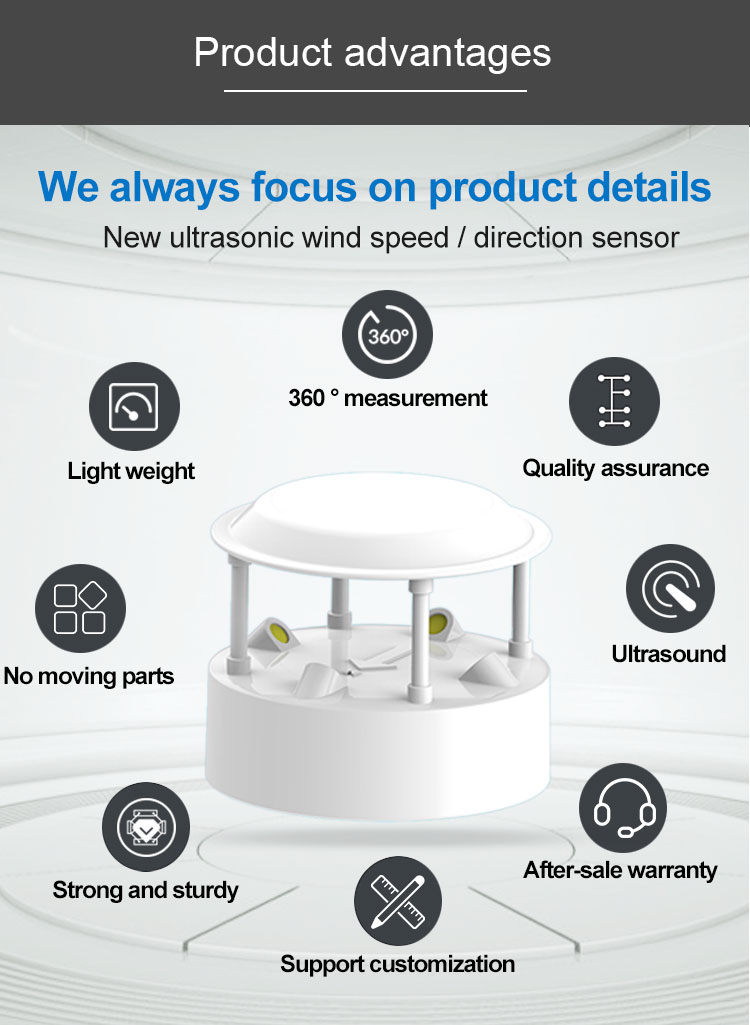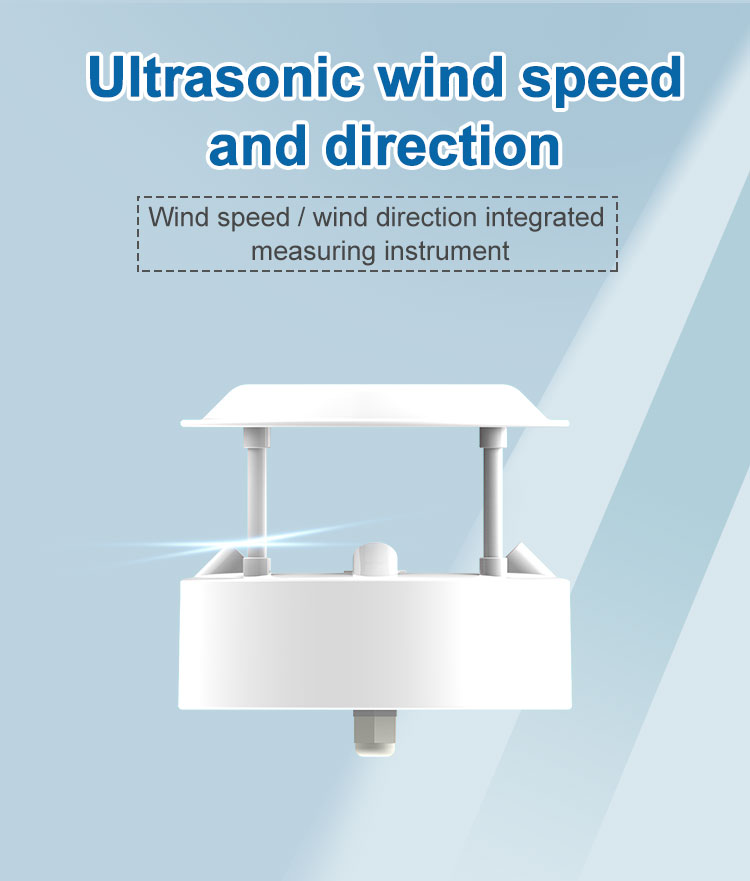Background:
Since ancient times, wind speed and direction have always been two important elements in meteorological monitoring. In modern times, wind speed and direction sensors are generally required to monitor wind speed and direction. At present, there are many wind sensor types. The three most commonly used. The first type is a propeller-type wind speed and direction sensor; the second type is a three-cup type wind speed and a single-wing wind direction sensor; the third type is an ultrasonic wind speed and direction sensor. The propeller-type wind meter has poor accuracy and average dynamic performance. The wind speed and direction sensor is the most important part of the wind speed and direction monitor and the core of the entire instrument. In addition, ultrasonic wind speed and direction is a more advanced wind speed and direction measuring instrument in science.

What are the differences between traditional wind speed and direction sensors and ultrasonic wind speed and direction sensors?
Traditional wind speed and direction sensor:
Simple measuring speed principle
Including mechanical movable parts, easy to wear, short life
There is a starting wind speed, which cannot be measured if it is lower than 0.3m/s
The higher the wind speed, the greater the error
The data resolution is coarse (0.1m/s)
Wind speed and wind direction cannot be measured at the same time
Ultrasonic wind speed and direction sensor:
No moving parts, solid and durable, can withstand typhoons
No starting wind speed limit
There is no obvious relationship between measurement error and wind
Fine data resolution (0.01m/s)
One machine simultaneously measures two parameters of wind speed and direction
Compared with the traditional mechanical wind speed and direction sensor, the ultrasonic wind speed and direction sensor has the following four advantages:
1. No inertial measurement, no start-up wind speed limit, zero wind speed work, 360° Omni-directional no angle limit, wind speed, and wind direction values can be obtained at the same time;
2. Adopt one-piece structure design, no moving parts as a whole, and the shell is made of engineering plastic material, which has low wear and long service life;
3. Using random error identification technology, it can ensure low dispersion error of measurement even under strong wind, making the output more stable;
4. The equipment does not require on-site calibration and maintenance.
Shandong JXCT Ultrasonic Wind Speed and Direction Sensor is a wind speed and direction measuring instrument based on the principle of ultrasound. It uses the transmitted sound pulses to measure the time difference at the receiving end to calculate the wind speed and direction. The sensor can measure the instantaneous value of wind speed and wind direction at the same time and supports three forms: 485 output, GPRS output, and analog output.
The housing of the sensor is made of high-quality ABS material, which has the characteristics of lightweight, no moving parts, sturdiness, and durability, and does not require maintenance and on-site calibration, and can output wind speed and direction at the same time. It can be used in conjunction with a computer, data collector, or other collection equipment with RS485 or analog output.
It is widely used in the measurement of wind speed and direction in the fields of meteorology, ocean, environment, airport, port, laboratory, industry, agriculture, and transportation.

Anemometer Wind Meter
The ultrasonic wind speed and direction sensor uses the propagation speed of ultrasonic waves in the air to be affected by the air flow to measure wind speed. Compared with conventional anemometers, the biggest feature of this measurement method is that the entire wind measurement system does not have any mechanical rotating parts. Inertial measurement, so it can accurately measure the high frequency components of gust pulsation in natural wind.